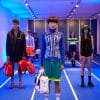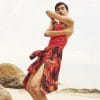For such an ever-evolving, fast-paced industry as fashion, 10 years is a very long time. There have been countless trends and numerous red-carpet triumphs, but what were the moments and movements that defined the decade? Here, we outline the game-changing junctures – be it people or campaigns – who left an indelible impact on the way the industry looks and feels.
1. The rise of Sarah Burton
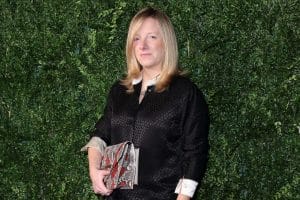
Mike Marsland
February 2010 saw the death of Alexander McQueen, the revolutionary designer who pushed boundaries with his darkness, romance and strong sense of beauty. His tragic passing was followed by the appointment of Sarah Burton as his successor. The designer had trained with McQueen since she was an intern, and was later made his personal assistant and in 2000, the brand’s new head of womenswear.
His were huge shoes to fill, but, over the course of the past decade, Burton injected her own sense of feminine romance to the label, giving it a lightness that was previously absent. McQueen’s signature craftsmanship, embroideries and tailoring remain pillars of the label and it is still known as one of fashion’s most creative and beautiful brands.
It was Sarah Burton’s McQueen that attracted the then Catherine Middleton to the label. One of the best-kept secrets in fashion history, Burton famously designed the royal wedding dress in 2011, combining tradition with modernity. The gown put Sarah Burton’s name on the international map and the look was later put on public display at Buckingham Palace.
2. The explosion of Vetements

Christian Vierig Getty Image
Since its first show in 2015, the rise of Vetements has hugely influenced the wardrobes of editors and influencers, as well as the wider public. Those who could afford to clamoured to buy its oversized hoodies emblazoned with Justin Bieber’s face, £800 jeans with frayed hems and yellow DHL logo T-shirts, sold at £185 each. Its twisted, meme-worthy take on Parisian streetwear, resonated with luxury consumers, then latterly the high street who replicated its key styles, such as baggy hoodies.
Vetements challenged what a luxury item looked like – the label played on corporate logos, from McDonalds to Ikea, and staged its shows in gay sex clubs and downmarket Chinese restaurants. The brand’s creative director, Demna Gvasalia, who fast became one of the industry’s buzziest names, refused to curtail to the traditional catwalk calendar, eventually scrapping runway events altogether. To avoid “exhausting and repetitive” fashion shows, Gvasalia instead presented seasonal collections in the brand’s Paris showroom instead. In October 2015, the designer was enlisted as Balenciaga’s new creative director, bringing his avant-garde aesthetic to the storied house.
The future of Vetements is currently unknown – 2019 saw reports that the brand was suffering declining sales. Gvasalia denied the rumours, but stepped down in September 2019. His brother, Guram Gvasalia, will still lead the label as CEO with the aim of “pushing boundaries even further”.
3. The death of Karl Lagerfeld
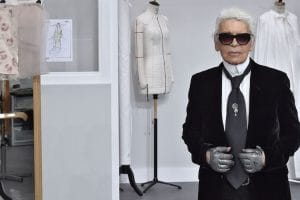
Victor Virgile Getty Image
Karl Lagerfeld’s death on 19 February 2019 prompted an outpouring of grief among the fashion industry. The most recognisable designer in the world, Lagerfeld may have been 85 when he lost his battle with cancer but his passing was still received with shock. His active, curious mind and endless thirst for knowledge gave the impression of seeming immortality.
Lagerfeld was responsible for reviving Chanel from what was then known as a dusty, old-fashioned brand into a successful pinnacle of fashion. His shows were modern theatre, creating catwalk spectaculars that never waned in their vastness, be it an underwater kingdom or a Chanel supermarket. He was the most intelligent person in fashion, known as a voracious reader and spoke four languages. Although he was fascinated by history, he always looked to the future. “Fashion is about going ahead, not about memory,” he once said.
After his death, he was succeeded by his right-hand woman Virginie Viard.
4. The influencer boom
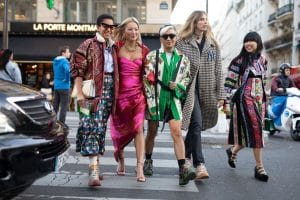
Matthew Sperzel Getty Image
By February 2011, there were over 156 million public blogs in existence. The pervasiveness of blogs led to the birth of influencers – a person who has the potential to influence consumers into buying a certain product usually via social media platforms. Their perceived expertise, authenticity and relate-ability (compared to preened, glossy celebrities at least) is an appealing prospect to brands who believe that influencer endorsement of their products gives added credibility. Today, the influencer market is seen as an invaluable marketing tool, and influencers now sit alongside key editors at catwalk front rows. These self-made men and women monetised their personalities by turning their online presence into brands, making themselves money by brands paying for them to wear pieces that they liked.
For a period, this was seen a big step in democratising fashion – where real people influenced trends rather than a fashion elite. But, as the influencer arena becomes increasingly saturated, the next ten years will be an interesting time for influencers. Authenticity among certain Instagrammers has become questionable. Some have been held accountable for not highlighting when they have been paid to wear a brand, while others have been criticised for overly staging shots 0r portraying a false image of themselves through filters.
The key part to buying into the influence of these men and women is whether or not the consumer believes their picture-perfect lives. As Instagram decides to remove its likes system, the future of this market is unclear.
5. The sustainability movement
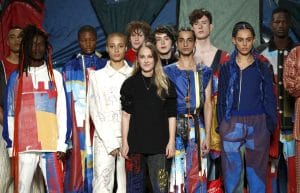
John Philips/ BFC Getty Image
Sustainability has become one of fashion’s buzziest words over the past 12 months. Although names such as Katharine Hamnett, Vivienne Westwood and Livia Firth have been extolling the virtues of sustainably made clothing for the past decade and beyond, the rise of teenager campaigner Greta Thunberg, the Extinction Rebellion movement and David Attenborough’s crackdown on plastic have placed environmental concerns at the forefront like never before.
As consumers are beginning to care more and more about the provenance of their clothes, the industry has started to shift. Numerous luxury brands, from Michael Kors to Victoria Beckham, have pledged to go fur-free, while huge conglomerates such as LVMH have announced plans to adopt sustainable practices. Fast fashion is becoming a dirty term and more and more consumers are turning to pre-owned or rental fashion to update their wardrobes. Bethany Williams, who is tackling both social and environmental issues by reinventing the typical linear production process, has been held up as a poster child for what luxury fashion should look going forward.
“For me, a true luxury brand knows where each individual material comes from,” says Gabriela Hearst, whose quietly elegant collections focus on sustainability. “A luxury designer needs to know what’s in the mill, where it came from and who made what; you need to know how things are built. That’s luxury.”
6. Rihanna’s fashion takeover
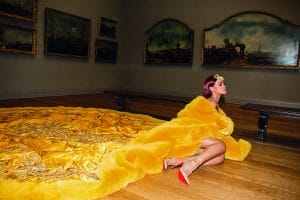
Courtesy
By the end of 2009, Rihanna was reportedly close to bankruptcy. A decade later, she’s the world’s richest female musician, ahead of Beyoncé and Madonna, with a $600 million fortune. Most of her financial assets come not from her music (fans will be aware she hasn’t released any new material since 2016’s Anti), but from her partnership with LVMH. Over the past 10 years, Rihanna has established herself as a fashion and beauty powerhouse.
Her first foray into fashion came in 2011 when she launched a collection with Armani. Next came collaborations with River Island, Dior, Stance and Manolo Blahnik. In 2015, she was crowned the first black woman to front a Dior campaign. Puma named her its womenswear creative director in 2014 and so ensued a number of successful collections, starring multiple sell-out pieces. However, her big fashion success came at the end of the decade. Hot off the heels of her LVMH co-owned Fenty Beauty line (praised for its diverse range for all skin colours), she launched Savage X Fenty, a lingerie label famed for its inclusivity and empowered message. Through both product and fashion shows, Rihanna told women that everyone was allowed a slice of the fashion pie regardless of ethnicity or size. The brand is said to have led to the downfall of underwear giant Victoria’s Secret.
In May 2019, she joined forces with LVMH to launch her own luxury fashion brand Fenty – the first time the luxury conglomerate has introduced a new label from its inception since Christian Lacroix in 1987. All this cemented Rihanna as a major fashion player.
Part of Rihanna’s respect within the industry also comes from her red-carpet prowess. Never one to make a statement or to go big, the singer-cum-designer is known for her boundary-pushing non-conformist looks, which sway from oversized streetwear to meme-worthy Chinese couture.
7. The fall of Victoria’s Secret

Getty Images
Although it would be difficult to classify Victoria’s Secret as a fashion brand, given its product offering (run-of-the-mill underwear usually adorned with an inordinate amount of glitter or crystals), in 2010 up until the last few years, the brand billed its annual catwalk events as “the most popular fashion show in the world”. Famed for its Angels, which have included Tyra Banks, Heidi Klum, Gisele, Rosie Huntington-Whiteley, Karlie Kloss and Lily Aldridge, the label was used by many models as a way of elevating their careers. Its shows, which focused on women’s bodies rather than clothes, were more widely covered and more adoringly than any other fashion brand.
As women’s voices became louder in the past few years with the rise of the Time’s Up and #MeToo movements, the vision of beauty offered by Victoria’s Secret became outdated. Criticisms of the brand increased – its racism, veneration of one singular body type and the objectification of women – and the public turned elsewhere, namely to more body-positive brands including US label Aerie and Rihanna’s Savage x Fenty. In 2019, the Victoria’s Secret cancelled it show, after its 2018 catwalk event received its lowest ratings on record.
The brand’s controversies have been numerous. In 2018, then-chief marketing officer Ed Razek came under fire after he said that he would never cast a transgender model in the show. He also insisted the public has “no interest” in the inclusion of plus-size models. L Brands, the company that owns VS, also attracted negative publicity thanks to founder Les Wexner’s friendship with the late US financier and convicted sex offender Jeffrey Epstein. Wexner enlisted Epstein as an advisor, but cut ties with him in 2007.
The business is currently reviewing its image, but a lot will need to change for Victoria’s Secret to ever regain its popularity.
8. The politicisation of the red carpet
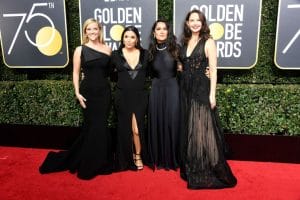
Frazer Harrison Getty Images
Red-carpet dressing has long been a fraught area for celebrities. What women wear to high-profile events has often attracted more attention than the films they are promoting, and the scrutiny received far disproportionate to their male peers. There is also the added fact that many actresses are paid to wear a brand’s gowns and jewellery – the red carpet is a big business.
But in 2018, there came a shift. In response to the numerous sexual assault allegations made against Harvey Weinstein, some of the most famous actresses in the world – including Reese Witherspoon and Meryl Streep – wore black to the Golden Globes. They marched down the red carpet like an army, using the scrutiny that their outfits usually face to amplify their Time’s Up message. A few months later at Cannes Film Festival, 82 women linked arms to protest the lack of female filmmakers promoted at the event. Kristen Stewart famously removed her high heels to go barefoot ahead of a Cannes film premiere to make a stand against the festival’s alleged flats ban.
Women are, of course, still judged by what they wear on the red carpet, but the tide has changed and some of more extreme forms of scrutiny have been banished – for example, E! News’ “Mani Cam”. The #AskHerMore campaign has lowered the number of boring questions Hollywood actresses were asked about their wardrobe choices in comparison to actors, placing the focus more on gender equality and her work itself. The red carpet has become a platform for protest and a means in which to communicate politics to the wider masses.
9. The birth of Instagrammable fashion
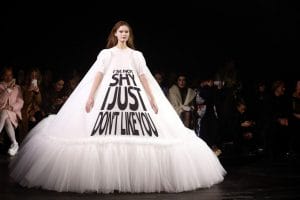
Thierry Chesnot Getty Images
Viktor + Rolf’s slogan ballgowns, Vetements’ DHL T-shirts or Y-Project’s denim ‘janties’… the fashion industry have capitalised on our love of Instagram by creating items with viral potential. These conversation starter pieces are low-hanging fruit for comedic Instagrammers, sparking entire social media accounts. Siduations and Freddiemade dedicate their Instagram grids to highlighting the humour of fashion’s more outlandish items, making the industry more accessible and light-hearted. Famous examples include Angelina Jolie’s 2012 thigh-baring red-carpet moment. and Rihanna’s Guo Pei ‘omelette’ dress worn to the 2015 Met Gala, which put Pei on the international map.
Sharing one of the meme images benefits both the brand and the social media user. For the brand, a viral image obviously brings its pieces to a wider audience, while also demonstrating its cultural relevance. A viral product builds hype for a certain piece or collection and it sets a label apart from dusty, older counterparts. For the consumer, sharing a viral fashion meme is a show of humour, irony and being in on the joke. It’s also a surefire way to a popular post – if something makes us laugh we’re more likely to like it.
Ironic publicity has become one of fashion’s most favoured new mediums – and, if it attracts a smile, we all benefit.
10. The Kate and Meghan effect
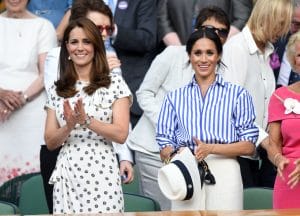
Karwai Tang Getty Images
The wardrobes of female members of the royal family have been pored over for decades, but the rise of social media has meant this scrutiny has been amplified over the last decade. The Duchess of Cambridge and the Duchess of Sussex have been the first to receive this treatment in earnest. While looks worn by the late Princess of Wales were closely examined, the pervasiveness of internet shopping enables shoppers to snap up an item worn by a royal immediately after an image has been shared, which – thanks to Twitter and Instagram – happens very fast.
The influence of Kate and Meghan on what people want to wear is no small matter. Both women prompt items to sell out, often elevating a brand and proving a great advert. While this is mostly positive, the impact can be damaging if the label doesn’t have a strong enough infrastructure in place – take, for example, Issa who went bust after its inability to scale production was ultimately too overwhelming following the then Kate Middleton’s decision to wear its blue tie dress for her engagement announcement.
The Meghan and Kate effect is all too real. According to global fashion search platform Lyst, Kate’s 2019 fashion choices led to a 119 per cent increase in online demand over the week following a public appearance. When it comes to Meghan’s ensembles, however, demand more than doubles, going up an average of 216 per cent.
From: Harper’s BAZAAR UK


